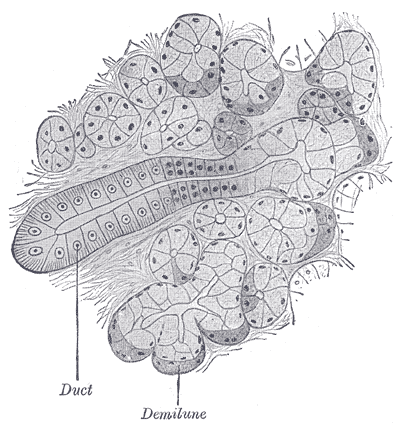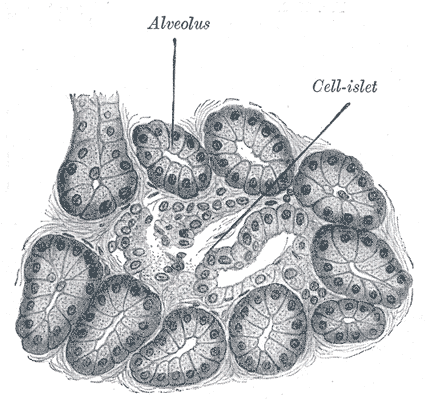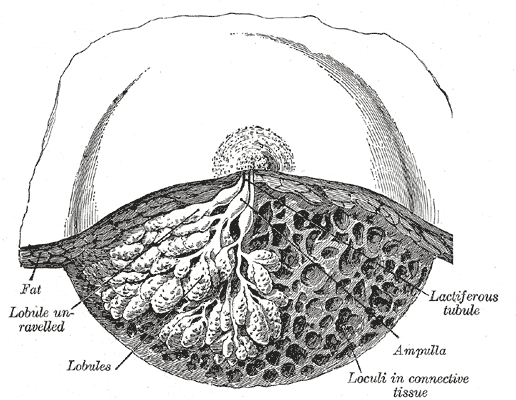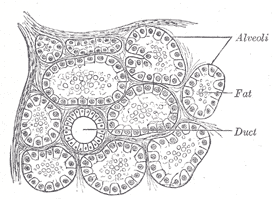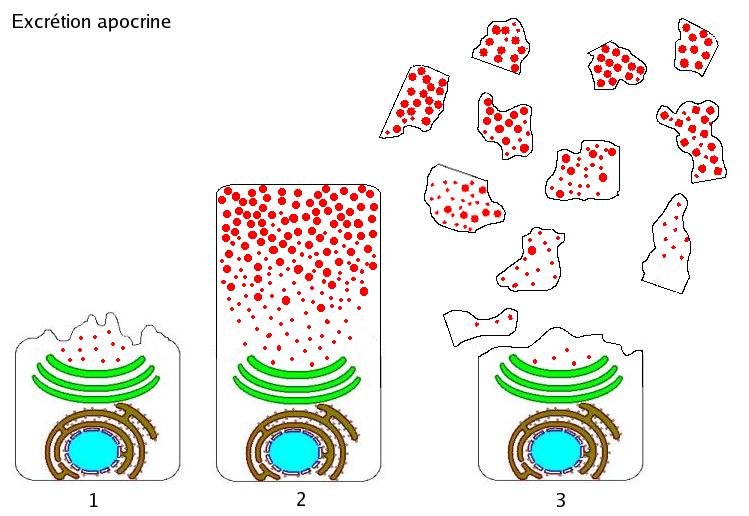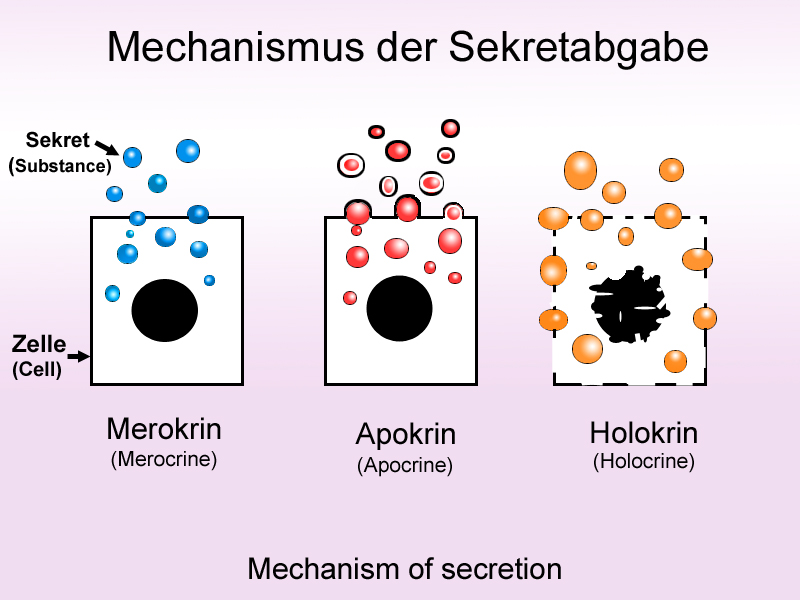Gland
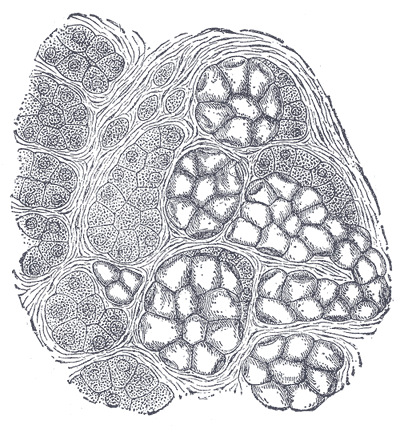
|
WikiDoc Resources for Gland |
|
Articles |
|---|
|
Media |
|
Evidence Based Medicine |
|
Clinical Trials |
|
Ongoing Trials on Gland at Clinical Trials.gov Clinical Trials on Gland at Google
|
|
Guidelines / Policies / Govt |
|
US National Guidelines Clearinghouse on Gland
|
|
Books |
|
News |
|
Commentary |
|
Definitions |
|
Patient Resources / Community |
|
Directions to Hospitals Treating Gland Risk calculators and risk factors for Gland
|
|
Healthcare Provider Resources |
|
Continuing Medical Education (CME) |
|
International |
|
|
|
Business |
|
Experimental / Informatics |
Editor-In-Chief: C. Michael Gibson, M.S., M.D. [1] Phone:617-632-7753
A gland is an organ in an animal's body that synthesizes a substance for release such as hormones or breast milk, often into the bloodstream (endocrine gland) or into cavities inside the body or its outer surface (exocrine gland).
Types
Glands can be divided into two groups:
- Endocrine glands- are glands that secrete their product directly onto a surface rather than through a duct.
- Exocrine glands- secrete their products via a duct, the glands in this group can be divided into three groups:
- Apocrine glands - a portion of the secreting cell's body is lost during secretion. Apocrine gland is often used to refer to the apocrine sweat glands, however it is thought that apocrine sweat glands may not be true apocrine glands as they may not use the apocrine method of secretion.
- Holocrine glands - the entire cell disintegrates to secrete its substances (e.g., sebaceous glands)
- Merocrine glands - cells secrete their substances by exocytosis (e.g., mucous and serous glands). Also called "eccrine."
The type of secretory product of an Exocrine gland may also be one of three categories:
- Serous glands- secrete a watery, often protein-rich product.
- Mucous glands- secrete a viscous product, rich in carbohydrates (e.g., glycoproteins).
- Sebaceous glands- secrete a lipid product.
Formation
Every gland is formed by an ingrowth from an epithelial surface. This ingrowth may from the beginning possess a tubular structure, but in other instances glands may start as a solid column of cells which subsequently becomes tubulated.
As growth proceeds, the column of cells may divide or give off offshoots, in which case a compound gland is formed. In many glands the number of branches is limited, in others (salivary, pancreas) a very large structure is finally formed by repeated growth and sub-division. As a rule, the branches do not unite with one another, but in one instance, the liver, this does occur when a reticulated compound gland is produced. In compound glands the more typical or secretory epithelium is found forming the terminal portion of each branch, and the uniting portions form ducts and are lined with a less modified type of epithelial cell.
Glands are classified according to their shape.
- If the gland retains its shape as a tube throughout it is termed a tubular gland.
- In the second main variety of gland the secretory portion is enlarged and the lumen variously increased in size. These are termed alveolar or saccular glands.
Specific glands
A list of human exocrine glands is available here.
A list of human endocrine glands is available here.
Additional images
-
Section of submaxillary gland of kitten. Duct semidiagrammatic.
-
Section of pancreas of dog. X 250.
-
Dissection of a lactating breast.
-
Section of portion of mamma.
-
Apocrine
-
Methods of secretion
References
ar:غدة bg:Жлеза ca:Glàndula cs:Žláza da:Kirtel de:Drüse el:Αδένας eo:Glando fa:غده gl:Glándula id:Kelenjar ia:Glandula it:Ghiandola he:בלוטה la:Glandula lt:Liauka mk:Жлезда nl:Klier no:Kjertel nn:Kjertel simple:Gland sl:Žleza sr:Жлезда fi:Rauhanen sv:Körtel uk:Залоза yi:גלענד
